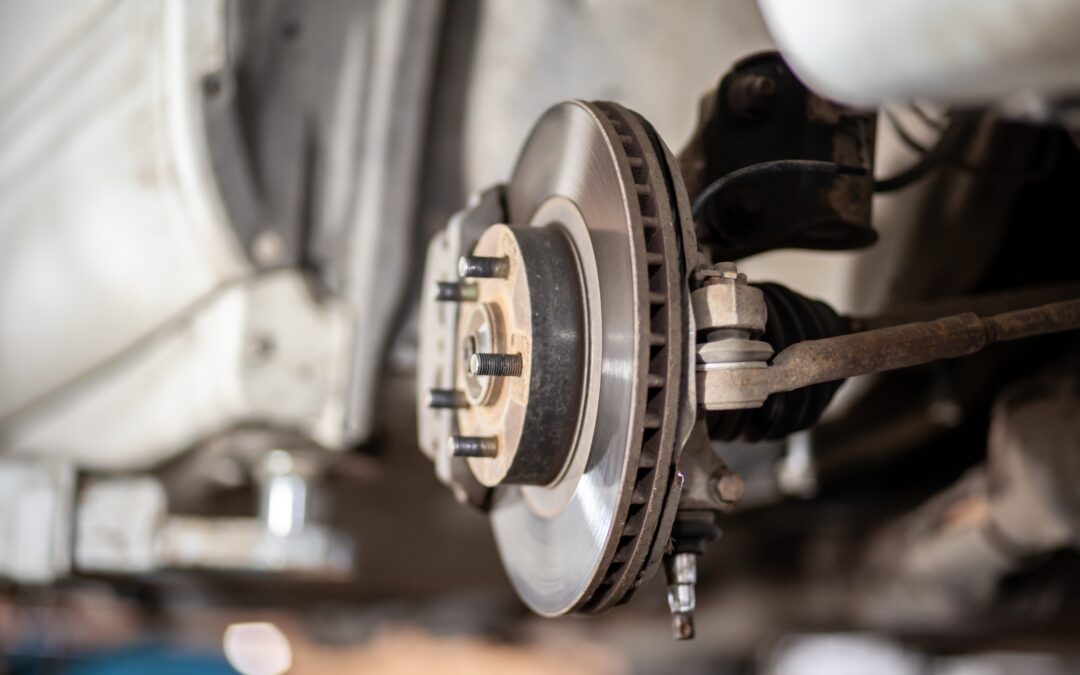Your vehicle’s braking system does more than just bring you to a stop – it’s a cornerstone of road safety. Brakes endure heavy use every time you drive, making them one of the most wear-prone components in any car or truck. In this month’s blog post, we explore how your braking system operates, what can go wrong, and what to expect when it’s time for service.
The Mechanics Behind Your Brake System
Every brake application begins with the pedal beneath your foot. When you press it, a chain reaction unfolds:
- The brake booster amplifies your pressure and sends it to the master cylinder.
- The master cylinder forces brake fluid – a hydraulic medium – through sealed metal brake lines.
- That fluid activates caliper pistons (for disc brakes) or brake cylinders (for drum brakes).
- Caliper pistons press the brake pads against spinning rotors on each wheel, creating the friction needed to slow your ride.
- For drum brake setups, the fluid pushes brake shoes outward onto drums, achieving a similar effect.
The harder you press, the more braking force is applied, converting kinetic energy into heat and slowing your momentum.
Signs Your Brakes May Be Wearing Out
Brakes are built tough, but they are not immune to wear, especially in stop-and-go traffic or on frequent long drives. While many brake systems hold up for around 40,000 miles, your driving style can cause components to wear sooner. Common symptoms of brake trouble include:
- Dashboard brake warning lights
- A soft or spongy pedal feel
- Visible fluid leaks under the vehicle
- Pulsing or vibration when braking
- High-pitched squealing or grinding noises
- Rotors that look scorched or uneven
- Worn-down brake pads or compromised calipers
If you experience any of these, a prompt inspection by a qualified technician is essential.
What’s Involved in a Brake Service?
Brake service can vary depending on the condition of your system and the shop’s process. A comprehensive brake job might include:
- Replacing worn pads or shoes
- Machining or swapping out damaged rotors
- Inspecting and repairing calipers and brake cylinders
- Flushing and refilling brake fluid
- Testing the brake lights
- Checking for corrosion or fluid leaks throughout the system
Technicians typically disassemble key components, clean and examine them, install replacements where needed, and ensure everything is reassembled with precision. Service time will depend on the severity of the wear or damage.
Before you get on the road for that long summer drive, consider having your brakes checked for peace of mind and safety. Contact the service professionals at Campus Repair to schedule a full brake inspection today.

